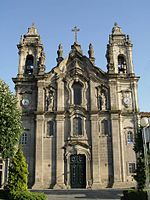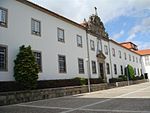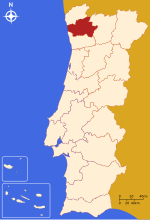Fountain of the Idol
Ancient Roman buildings and structures in PortugalBuildings and structures in BragaFountains in PortugalNational monuments in Braga District

The Fountain of the Idol (Portuguese: Fonte do Ídolo) is a Roman fountain located in the civil parish of São José de São Lázaro, in the municipality of Braga, northern Portugal. Located in the former territory of the Callaici Bracari, the granite rock fountain/spring has Latin inscriptions, dedicated to the Gallaecian and Lusitanian gods Tongoenabiagus and Nabia (built during the era of Roman Emperor Augustus).
Excerpt from the Wikipedia article Fountain of the Idol (License: CC BY-SA 3.0, Authors, Images).Fountain of the Idol
Rua do Raio, Braga São José de São Lázaro (Braga (São José de São Lázaro e São João do Souto))
Geographical coordinates (GPS) Address External links Nearby Places Show on map
Geographical coordinates (GPS)
| Latitude | Longitude |
|---|---|
| N 41.548602777778 ° | E -8.4219527777778 ° |
Address
Fonte do Ídolo
Rua do Raio
4710-250 Braga, São José de São Lázaro (Braga (São José de São Lázaro e São João do Souto))
Portugal
Open on Google Maps










